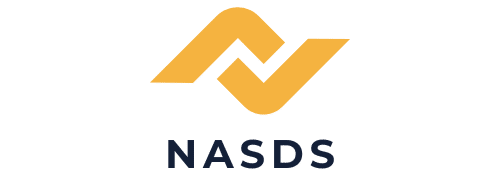What Are the Best Exercise Modifications for Individuals with Scoliosis?

Scoliosis, a term many of you might have come across during a routine health check-up or through a friend’s experience, is a medical condition where the spine curves to one side. It can affect anyone, from children to adults, and its severity can vary from person to person. If you or a loved one has scoliosis, you may be wondering how to adjust your exercise routine to accommodate this spinal anomaly. This comprehensive guide is here to assist you by exploring the best exercise modifications tailored specifically for individuals with scoliosis.
Understanding Scoliosis and Its Impact on Physical Activity
Before we delve into the specific exercises and modifications, it’s crucial to comprehend what scoliosis entails and how it impacts physical activity. Scoliosis can cause discomfort, limit mobility, influence posture, and in severe cases, lead to pain. However, these challenges should not deter you from maintaining an active lifestyle. Exercise is not only possible for patients with scoliosis, but it’s also beneficial and can be part of a comprehensive treatment approach.
Cela peut vous intéresser : What Impact Does Urban Noise Pollution Have on Cardiovascular Disease Risk?
Physical activity strengthens muscles, improves posture, and enhances overall health. However, individuals with scoliosis should be cautious about their choice of exercises. Certain activities might strain the spinal curve, leading to increased discomfort or progression of the curve. Thus, you need to modify your exercises to ensure they are safe, effective, and beneficial for your particular condition.
Schroth Method: A Specific Exercise Approach for Scoliosis
The Schroth Method is a specific exercise program developed for scoliosis patients. This approach aims to de-rotate, elongate, and stabilize the spine, reducing the curve and improving posture and overall function. The Schroth Method is not a one-size-fits-all approach. The exercises are tailored to each patient’s unique spinal curvature.
A voir aussi : How Does Participating in Cooperative Video Gaming Influence Adolescent Social Skills Development?
The exercises in the Schroth Method involve stretching, strengthening, and stabilizing the spine, using props such as exercise balls, poles, and walls to maintain correct alignment. The goal is to strengthen the muscles on the underused side of the body and stretch the overly used muscles on the other side. This corrective approach can reduce pain, slow the progression of the curve, and improve quality of life.
Incorporating Scoliosis-Specific Modifications into Your Exercise Routine
When you have scoliosis, it’s vital to make modifications to your exercise routine. These changes ensure you’re not exacerbating your condition or causing unnecessary pain. The following are some general modifications to consider:
- Avoid Asymmetrical Exercises: These exercises can promote an imbalance, which might worsen the spinal curve. Instead, focus on symmetrical exercises that work both sides of the body equally.
- Emphasize Core Strength: Strong core muscles can provide better support to your spine, making activities easier and reducing discomfort.
- Prioritize Flexibility: Maintaining flexibility can improve posture and decrease pain. Incorporate stretching exercises into your workout routine.
Tailoring Your Exercise Program to Your Needs
The most effective exercise program for a person with scoliosis is one tailored to their needs and capabilities. Factors like the severity of the curve, age, physical fitness, and personal goals should all be considered when developing a workout routine.
Work with a physical therapist or a professional trained in scoliosis-specific exercises to design a program that suits you. They can guide you on proper form and technique to ensure you’re exercising safely and effectively. An ideal program should incorporate exercises that improve strength, flexibility, and posture, without causing any discomfort or exacerbating the spinal curve.
Importance of Professional Guidance in Managing Scoliosis with Exercises
While exercises can be beneficial for people with scoliosis, it’s crucial to seek professional guidance. Misguided workouts can do more harm than good by worsening the spinal curve or causing pain. Professionals like physiotherapists or chiropractors, familiar with scoliosis and its implications, can provide safe and effective exercise recommendations.
They can oversee your progress, adjust your program as necessary, and provide invaluable advice on maintaining a healthy, active lifestyle despite scoliosis. Remember, although scoliosis might alter the way you approach exercise, it doesn’t have to stop you from being active. With the right guidance and modifications, you can maintain your fitness and manage your condition effectively.
Remember that each individual’s experience with scoliosis is unique. What works for one person may not be suitable for another. Take the time to understand your body and its response to various exercises, and don’t hesitate to seek professional guidance as you navigate through this journey. Because in the end, it’s all about enhancing your quality of life and well-being.
The SEAS Method: Another Exercise Modality for Scoliosis
The SEAS Method, an acronym for Scientific Exercise Approach to Scoliosis, is another notable exercise program that has shown promising results in managing scoliosis. Developed in Italy, this approach focuses on active self-correction and neuromotor rehabilitation.
Active self-correction is a principle of the SEAS Method where the individual consciously corrects their posture during daily activities and exercise. This concept encourages the development of new motor skills that can help manage the spinal curvature. By incorporating active self-correction into their daily routine, individuals with scoliosis can improve their posture and mitigate the effects of their condition on their quality of life.
Neuromotor rehabilitation, on the other hand, aims to enhance the body’s motor control and coordination. This aspect of the SEAS Method involves exercises that challenge balance and stability to build core strength and improve motor skills.
The SEAS Method emphasizes the importance of individualized exercise programs. Like the Schroth Method, it does not advocate a one-size-fits-all approach but rather promotes programs that are specific to each individual’s needs and capabilities. The severity of the curve, measured using the Cobb angle, age, and overall physical fitness, are all considered when designing a SEAS Method exercise program.
Remember, adopting an exercise method like SEAS or Schroth for scoliosis should always be done under the supervision of a trained healthcare professional, like a physical therapist.
Conclusion: The Power of Modified Exercises in Scoliosis Treatment
Living with scoliosis can be challenging, but it doesn’t have to limit your ability to exercise and stay active. With the right approach, exercise can be a powerful tool in managing scoliosis and enhancing your overall quality of life. Modified exercises, whether they’re part of the Schroth Method, the SEAS Method, or other scoliosis-specific programs, can help improve posture, build strength, promote flexibility, and potentially slow the progression of the spinal curve.
It’s important to work with a healthcare professional, such as a physical therapist, who is knowledgeable about scoliosis and can guide you through the process of creating an effective exercise program. They can ensure you’re doing exercises correctly, modify them to fit your needs, and track your progress over time.
In essence, remember that while scoliosis might require you to modify your exercise habits, it doesn’t have to limit your ability to lead an active, healthy lifestyle. With the right guidance and a commitment to regular exercise, you can manage your scoliosis effectively and maintain your fitness in a safe and beneficial way. Your journey with scoliosis is unique to you, and with patience, dedication, and professional guidance, you can navigate this path successfully.
